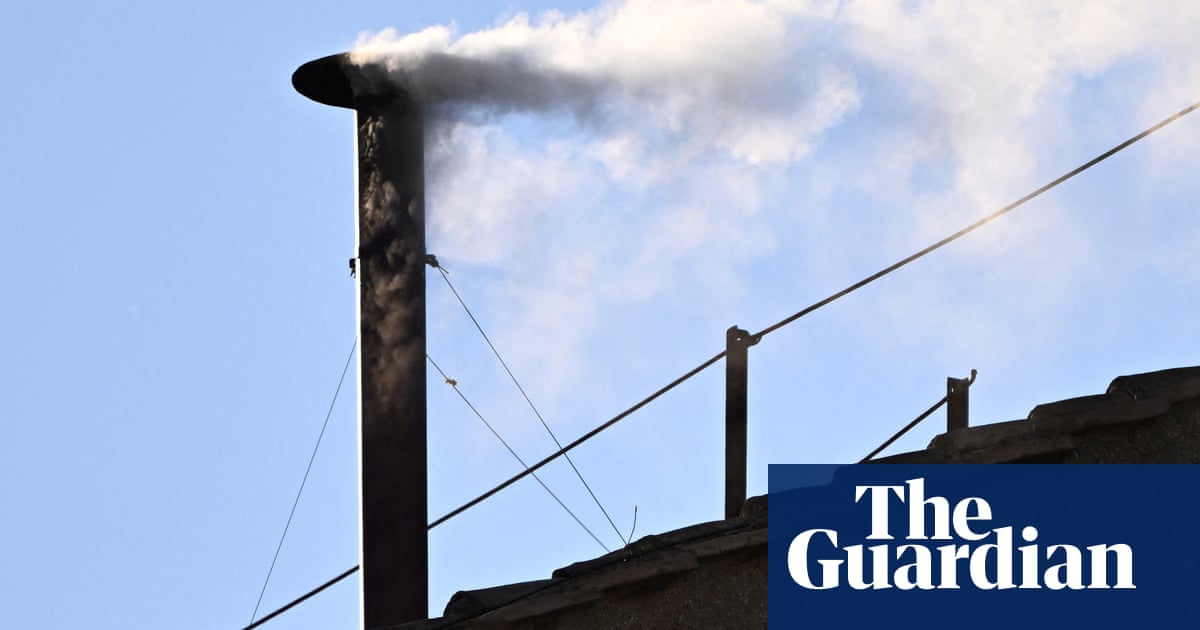Thick white smoke has billowed from the chimney above the Sistine Chapel, signalling to the world that the Roman Catholic church has a new pope.
The smoke was met with loud applause from the thousands of pilgrims and tourists waiting in St Peter’s Square on Thursday. It means that one of the 133 cardinals inside the chapel has obtained the two-thirds majority required to win the conclave, the secretive centuries-old ritual of electing a new pontiff.
In a further confirmationthat the conclaveis over, the bells of St Peter’s Basilica rang out. The pope was chosen on the second day of voting, after the fourth ballot, although his identity was not immediately made known. When Jorge Bergoglio, who became Pope Francis, was elected in March 2013, his identity was revealed about 45 minutes after the white smoke when he appeared on the balcony above St Peter’s Square.
Francis died, aged 88, in April. His successor was picked quickly, especially given the large number of cardinals taking part in the conclave. The vast majority were picked by the Argentinian, who cast his net wide around the world.
Some have said this could indicate that the new pope is someone who will embrace his outlook and continue his work. But there is no guarantee, particularly given many of the new cardinals represent countries with conservative social attitudes at odds with Francis’s style of papacy, which was shaped around a message of acceptance that challenged centuries of church teaching.
Francis riled conservative cardinals withhis compassion for migrants and refugees,openness towards LGBTQ+ Catholicsanddemands for action on the climate crisis.
Among the frontrunnersbefore the conclave began were Pietro Parolin, the Vatican’s secretary of state; Luis Antonio Tagle, a reformer from the Philippines; Péter Erdő, a traditionalist from Hungary; Robert Sarah, a cardinal from Guinea who criticised Francis’s papacy; and the moderate US cardinal Robert Prevost.
But as the old papal election saying goes: “He who enters the conclave as pope, leaves it as a cardinal”, because few of those who are frontrunners at the start make it through the successive rounds of voting. A key example of that process came with Francis himself, who in 2013 was not among the frontrunners.
During one of the twice-daily pre-conclave meetings, the cardinals agreed that a new pope needed to be capable of “being a bridge and a guide for a disorientated humanity marked by the crisis of the world order”.
Various issues related to the church were discussed during the meetings, including evangelisation, the Vatican’s finances, clerical sexual abuse, global conflicts and service to poor people and migrants.
A priority for the new pope will be to strengthen the church’s unity amid differing views and expectations within the institution and growing polarisation in the wider world. Some observers believe there is a real risk of schism after 20 years in which there have been popes on either end of the spectrum: the traditional/conservative Benedict XVI, and the liberal/progressive Francis.
A key area of unity and healing will be the US Catholic church, where Pope Francis was a divisive figure. Some US bishops are avid supporters of Donald Trump whileothers are dismayedby the president’s policies and statements. An early visit to the US may be high on the new pope’s agenda.
The pontiff plays an important role on the international stage, particularly to ensure that religion does not become a fault line. He will face ongoing conflicts in Ukraine, the Middle East and Sudan plus the politically divisive issues of migration, the climate crisis, religious freedom and human rights.
The legacy ofsexual abuse cast a long shadowover Francis’s papacy. He was slow to grasp the scale and systemic nature of the problem, and at first did not understand the pain and anger of survivors. That pain has not gone away, and the new pope’s approach will inevitably come under intense scrutiny.
